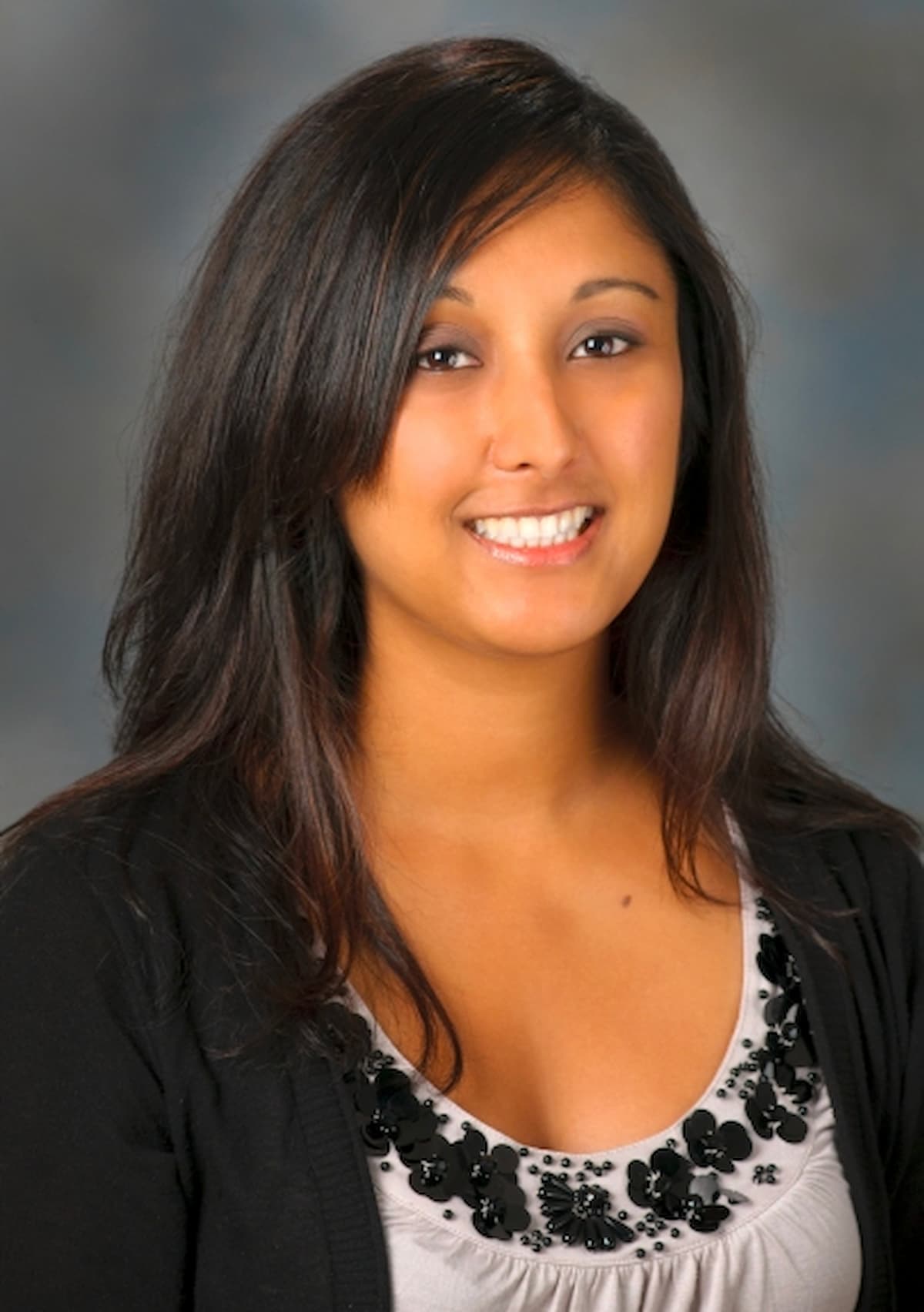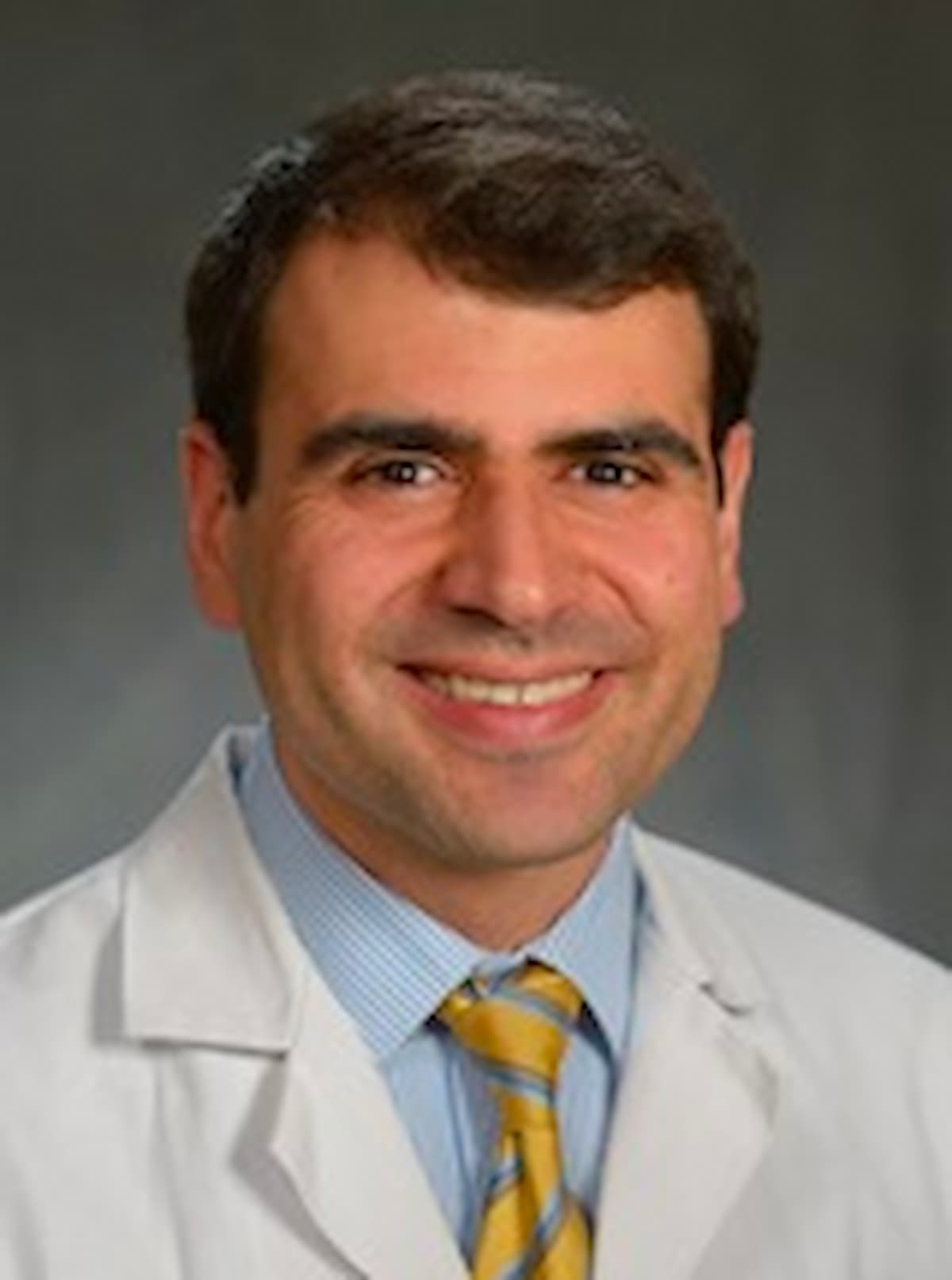Bispecific Antibodies Promise to be ‘Transformative’ in Multiple Myeloma
A panel of experts reviews how the recent approval of teclistamab, a bispecific antibody, has changed the treatment landscape for patients with multiple myeloma.
Ajai Chari, MD
Mount Sinai Health System
New York, NY

Krina K. Patel, MD, MSc
The University of Texas MD Anderson Cancer Center
Houston, TX

Alfred L. Garfall, MD
Penn Medicine
Philadelphia, PA

Sham Mailankody, MBBS
Memorial Sloan Kettering Cancer Center
New York, NY

At a recent Around the Practice® program, experts spoke about recent advances in multiple myeloma, including the approval of teclistamab-cqyv (Tecvayli), the utility of the FDA’s accelerated approval process, and the promise of bispecific antibodies generally. Additional highlights from the conversation included the future of bispecifics and how they may impact a patient's quality of life.
The discussion was led by Ajai Chari, MD, a professor of medicine and director of clinical research in the Multiple Myeloma Program at the Icahn School of Medicine atMount Sinai in New York, New York.
Panelists included Krina K. Patel, MD, MSc, associate professor in the Department of Lymphoma/Myeloma in the Division of Cancer Medicine at The University of Texas MD Anderson Cancer Center in Houston; Alfred L. Garfall, MD, assistant professor of medicine and director of autologous hematopoietic stem cell transplantation at the Hospital of the University of Pennsylvania; and Sham Mailankody, MBBS, associate attending physician at Memorial Sloan Kettering Cancer Center in New York City, New York.
The Use of Teclistamab in Multiple Myeloma
Chari: What data was the approval of teclistamab based upon?
Garfall: It’s an exciting time, and [it was some] very exciting data that led to the recent accelerated approval of teclistamab.1 The approval was based on data from the MajesTEC-1 study [NCT03145181; NCT04557098], a phase 1/2 study which began as a dose escalation study.2 [MajesTEC-1 tested] intravenous dosing of teclistamab and transitioned [to phase 2] over time after identifying a recommended phase 2 dose of 1500 mcg/kg, or 1.5 mg/kg, administered as a subcutaneous injection once weekly.
The phase 2 portion of the study identified a response rate of around 64%, with most of those responses being very good partial responses or better. Those responses [were also] very durable, with about 66% of patients remaining in response after a year of therapy. Patients can remain in response to this medication for a very long time. That was the headline efficacy data that led to the approval.
Chari: In terms of response rates, is 60% to 100% the new 20% to 30%? How impressive are these results?
Patel: Those [response rates] are phenomenal. We’re all millennial doctors who [began working] in the last 10 years, [and], for us, this is going to be the new normal. [Even] if you see something lower than [those rates], it’s still good.
[However], among patients with relapsed/refractory disease, we can’t expect every drug to perform like this, especially now that we have so many more drugs. [For] patients who are refractory to teclistamab or to a chimeric antigen receptor [CAR] T-cell therapy, [achieving a] 60% or 100% response rate in the 7th or 8th line is very difficult. The response rates, at least for our generation, are [nonetheless] amazing.
Chari: There are several constructs available today. We have AMG 701, alnuctamab [CC-93269], elranatamab, HPN217, linvoseltamab [REGN5458], teclistamab, and finally TNB-383B. Some of the salient differences [between all these] include route of administration and [dosage] frequency. Most of them are intravenous, but a couple are subcutaneous, including elranatamab and teclistamab. Most are [administered] weekly, but TNB-383B is [administered] every 3 weeks.
The sample sizes [of the studies examining these agents] vary. The largest [study examined] teclistamab in 165 patients.2 The others [are being examined] in increasingly large sample sizes.
The number of patients who have been treated with bispecific antibodies already far exceeds [the number of those treated with] CAR T. It’s foreshadowing what will likely happen in real-world settings.
How deep and durable are the responses we’re seeing with some of these newer agents? Is there anything striking about these constructs compared to what we’re used to in relapsed/refractory myeloma?
Garfall: For so long, the new drugs in myeloma had single-agent response rates ranging from 20% to 30%. We’ve [recently] seen a dramatic transformation in overall survival [OS] with those agents as they’ve been incorporated into earlier lines of therapy. [We’ve seen] at least a doubling of survival expectations using drugs that [formerly] showed response rates of 20% to 30%. Nowadays we have a series of medications with new mechanisms of action which [often] double response rates. This foreshadows remarkable improvements in OS for patients with multiple myeloma.
Most of my experience has been with teclistamab, and it is remarkable. While there are some adverse effects [AEs] and toxicities that you have to watch early-on, the patients who achieve response [on this agent] are like the patients in our case discussions, coming in for weekly or biweekly subcutaneous injections. It’s a very simple therapy compared with just about anything those patients were taking before teclistamab.
Chari: How should we select between these 3 different ways of targeting B-cell maturation antigen [BCMA]: antibody-drug conjugates [ADCs], bispecific antibodies, and CAR T?
Patel: It’s a good problem to have more than just a single possible option. We have much to learn about which patients should receive which [agent] first.
The other big issue is access. In the end, we give our patients whatever we have access to. Right now, when using CAR T, a one-and-done for my patients is generally preferable to no therapy at all. However, there aren’t any comparative studies examining toxicity and long-term duration [of response]. I look at patients who are eligible for CAR T similarly to those eligible for bispecifics.
The ADCs are still great options; it’s [just] a different mechanism of action. [I use] ADCs if a patient can’t receive bispecifics or CAR Ts, or if I can’t find a way to get something different for a patient who needs it.
I [also] worry about [treatment] sequencing. There’s a lot coming out now; a lot of the teclistamab studies, other CAR T studies, [and] real-world studies which suggest we’ll have to figure out the [optimal] sequencing.
Accelerated Approvals in the Myeloma Space
Chari: We’re privileged in the United States and Europe to have this accelerated approval pathway; if you have an unmet need, you can get a patient access to a drug based on a single-arm study without a control arm. There have been 3 times in myeloma when we’ve been burned by this; first with checkpoint inhibitor therapy, and then also with venetoclax [Venclexta] and melphalan flufenamide [Pepaxto], which looked promising in single-arm studies before the control arm showed some unexpected signals.
Most recently, the phase 3 DREAMM-3 trial [NCT04162210] comparing belantamab mafodotin [Blenrep] vs pomalidomide [Pomalyst] plus dexamethasone showed that, even though PFS was slightly higher with belantamab mafodotin, the hazard ratio was around 1.3
One of the questions the FDA asked was: Is there a future for accelerated approvals?
Mailankody: I believe there is a future for accelerated approvals. With these approvals, there’s a requirement for confirmatory studies. The 4 examples you highlighted are, to some degree, testament that those confirmatory studies were performed. When these weren’t favorable, those drugs [were often] rescinded. Venetoclax is now under study in specific subsets [of the patient population] where the benefit may be more evident.
There is a challenge with approving drugs too quickly, [and] there’s a balance between efficacy and safety, but we’re talking about patients with 4 to 6 prior lines of treatment. As long as the field is committed to confirmatory studies and taking action when those studies report results, in balance, for drugs that have a response rate of 60% [and a] duration of response of 18 months in patients who otherwise do not have many options, [accelerated approvals] are still reasonable.
Garfall: I completely agree. It’s known that an accelerated approval [carries the] potential for failure and rescission. It’s not necessarily a failure of the system for an occasional accelerated approval to not be confirmed. You have to [weigh that risk against] the tremendous benefit that can come from a truly effective drug making it out into widespread use earlier.
Some of the patients that we’ve treated with teclistamab on the clinical trial would be dying of multiple myeloma if they didn’t have access to that medication. We always have to maintain the caveat, when something receives accelerated approval, that we don’t absolutely know if the drug prolongs progression-free survival [PFS] or OS. [However], if we’re using the medication within the FDA label for a [critical unmet need], we can feel comfortable using it and waiting for the confirmatory studies.
Also, confirmatory studies sometimes ask different questions. The failure of a confirmatory study in a particular clinical setting doesn’t mean that another one down the road won’t be positive. It’s all about finding the right role in the patient population for these drugs for which the benefits outweigh the risks.
Patel: I completely agree. Some of the [recent drugs receiving] accelerated approvals have had 60% to 100% response rates; that’s such a big difference that, unless there’s a huge safety issue, I can’t imagine [these issues] will affect those newer novel drugs.
In this patient population, we’re not curing patients right now. We hope to in the future, but we’re not [currently], and they need more therapies to survive this. If they’re safe therapies, and they work for some patients, we need a way to get these agents to them as soon as possible.
Chari: Unfortunately, a delay in getting new therapies to these patients can literally be a life-and-death delay. It seems we agree; our patients live so much longer because of these agents.
Combination Regimens and Other Agents
Chari: Are there any combinations you’re excited about?
Garfall: Time will tell. With the older generation of therapies, which had lower single-agent response rates, we all recognize they need to be given in combination. Time will tell whether combinations are necessary with [the more] potent [newer] agents, and how the risk-to-benefit ratio stacks up. [However], there are some obvious combinations to consider, [such as combinations] with other drugs that have immunomodulatory properties, like anti–CD-38 antibodies and… [drugs like] lenalidomide [Revlimid] or pomalidomide, as well as the next generation of agents in that class.
Chari: What are some of the data on cevostamab, [a bispecific T-cell engager antibody]?
Patel: There’s an [ongoing] phase 1/2 study [NCT03275103], including over 160 patients.4 [This is a] heavily pretreated population [with a median of] 6 prior lines of therapy, 21% of whom had extramedullary disease. [As of November 2021], 80% of these patients had cytokine release syndrome [CRS], but mostly grade 1/2. Roughly 34% of these patients had prior BCMA-targeted therapy.
Response rates were around 50% [in the relevant subgroups]. So, for patients who’ve received multiple lines of therapy—penta-exposed patients—and for those who are BCMA-exposed, these great response rates are rather impressive.
Chari: Where does this agent belong in the myeloma armamentarium?
Garfall: It’s amazing to have yet another target, a target I hadn’t even heard of until… that study came online. It has a similar safety and efficacy profile to the other BCMA-targeted bispecifics in terms of CRS; it showed excellent tolerability with prolonged dosing. It’s very exciting.
Final Thoughts
Chari: This is a new era. To conclude, what do you want to convey to community providers who may not yet have experience treating patients with bispecifics?
Garfall: We have to wait for the confirmatory studies, but my sense from the single-agent activity of these agents, along with CAR Ts and similar agents, is that the sweetest therapies will add years to the survival of [patients with] multiple myeloma. We’re talking about a group of therapies that could be transformative in the same way that immunomodulatory agents and proteasome inhibitors were transformative a decade or so ago.
Patel: Being able to provide more access to patients [is critical]. With CAR Ts, [despite] the amazing responses we’ve seen, being able to get our patients access has been very hard.
At times I’m very excited, and other times I’m depressed. However, I’m excited about bispecifics [because] now I have something I can give my patients who need something [immediately]. [It’s critical] to be able to do [so] in the community, [since] that’s where all my patients are treated. It’s easy for us to sit here and talk about myeloma, but we don’t get to see all those patients, and so to have something that they can access [in community settings] is phenomenal.
Mailankody: When I started my fellowship for oncology, which was not very long ago, I hadn’t heard of BCMA, GPRC5D or FcRH5. The very first BCMA-directed CAR T therapy [emerged] when I was a fellow at the National Institutes of Health, the first patients [were treated] fewer than 10 years back, in 2014. Going from not knowing any of these 3 targets to having multiple drugs and treatments to target each of them is a remarkable transformation for relapsed/refractory multiple myeloma. Hopefully, that same transformation will carry on for patients with newly diagnosed myeloma, and in earlier lines of treatment, in the near future. These are very exciting times.
References
- FDA approved teclistamab-cqvy for relapsed or refractory multiple myeloma. News Release. FDA. October 25, 2022. Accessed October 25, 2022. https://bit.ly/3Fgsi4s
- Pal SK, Albiges L, Rodriguez CS, et al. Teclistamab, a B-cell maturation antigen (BCMA) x CD3 bispecific antibody, in patients with relapsed/refractory multiple myeloma (RRMM): updated efficacy and safety results from MajesTEC-1. J Clin Oncol. 2022;40(16 Suppl):8007. doi:10.1200/JCO.2022.40.16_suppl.8007
- GSK provides update on DREAMM-3 phase III trial for Blenrep in relapsed/refractory multiple myeloma. News release. GSK. November 7, 2022. Accessed November 8, 2022. https://bit.ly/3FYNEnB
- Trudel S, Cohen AD, Krishnan AY, et al. Cevostamab monotherapy continues to show clinically meaningful activity and manageable safety in patients with heavily pre-treated relapsed/refractory multiple myeloma (RRMM): updated results from an ongoing phase I study. Blood. 2021;138(Suppl 1):157. doi:10.1182/blood-2021-147983
EP: 1.Patient Case 1: Relapsed/Refractory MM Managed With Teclistamab
EP: 2.Overview of BCMA-Targeting Bispecific Antibodies in Relapsed/Refractory MM
EP: 3.Selecting and Sequencing BCMA-Targeting Bispecific Antibodies in Relapsed/Refractory MM
EP: 4.BCMA-Targeting Bispecific Antibodies in RRMM: Optimal Management of CRS
EP: 5.BCMA-Targeting Bispecific Antibodies in RRMM: Managing ICANS and Infections
EP: 6.Patient Case 2: Managing Heavily Pre-Treated MM With Talquetamab
EP: 7.Appropriate Patient Selection for Talquetamab in Relapsed/Refractory MM
EP: 8.Patient Case 3: Cevostamab in a Patient with MM who Progressed on Multiple Lines of Therapy
EP: 9.Appropriate Patient Selection for Cevostamab in Relapsed/Refractory MM
EP: 10.Bispecific Antibodies in Relapsed/Refractory MM: Future Perspectives
EP: 11.Bispecific Antibodies Promise to be ‘Transformative’ in Multiple Myeloma
Navigating AE Management for Cellular Therapy Across Hematologic Cancers
A panel of clinical pharmacists discussed strategies for mitigating toxicities across different multiple myeloma, lymphoma, and leukemia populations.